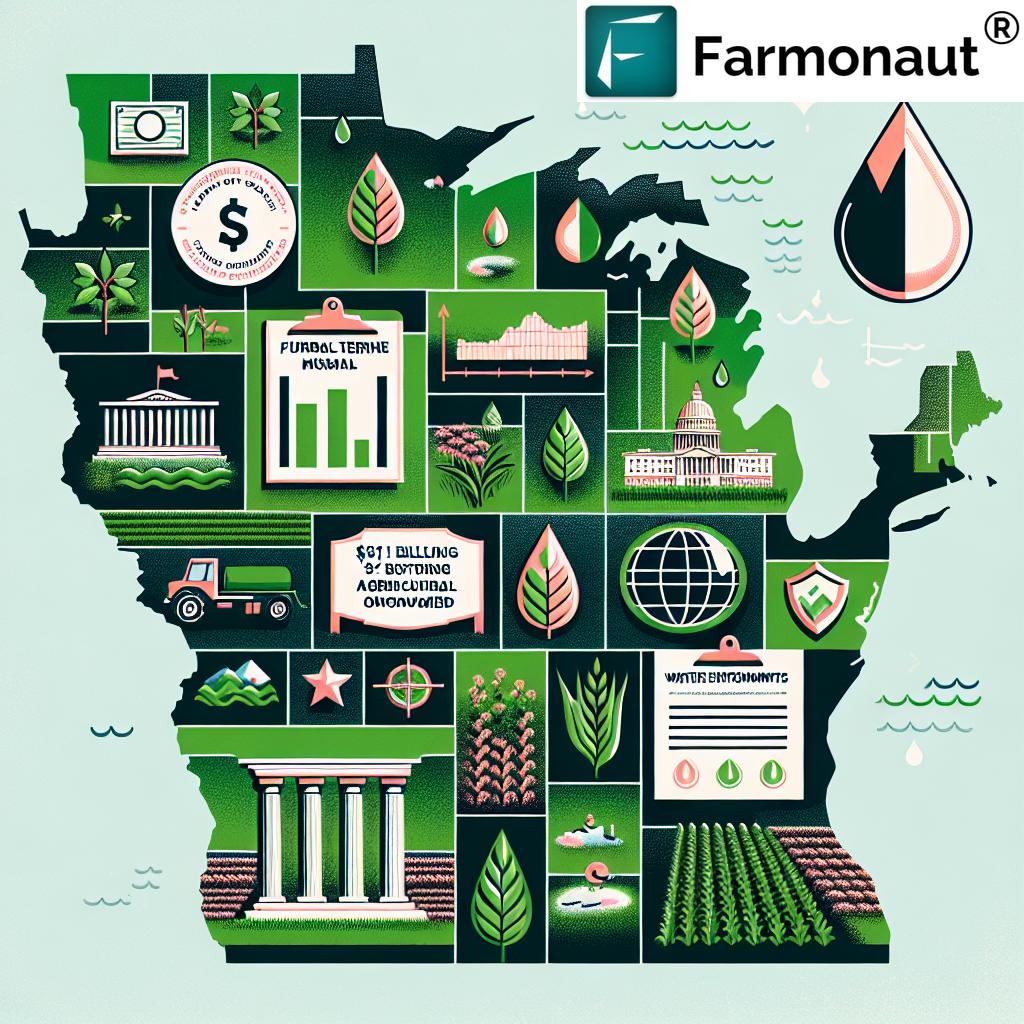US Dollar Weakens Amid Trade Tensions: Impact on Global Markets and Economic Indicators
“The US trade deficit surged to $98.4 billion in December, surpassing economists’ predictions.”
In today’s interconnected global economy, currency fluctuations and trade tensions can have far-reaching consequences. We’re witnessing a significant shift in the economic landscape as the US dollar weakens against major currencies, primarily due to escalating trade tensions with China and other key trading partners. This blog post delves into the complex interplay of international trade disputes, employment trends, and economic uncertainties that are shaping the global financial landscape.
The Weakening Dollar: A Closer Look
On Wednesday, the U.S. dollar exhibited notable weakness against several major currencies. This decline in dollar value can be attributed to a combination of factors, with the escalating tensions between the U.S. and China playing a pivotal role. Additionally, potential tariff actions targeting the U.S.’s major trading partners have contributed to this downward trend.
Interestingly, the Trump administration’s decision to postpone the implementation of tariffs on imports from Canada and Mexico has also influenced the dollar’s position. This move, while aimed at easing tensions with these North American neighbors, has inadvertently contributed to the overall weakening of the US currency.

Trade Tensions and Tariff Impacts
The situation escalated significantly after the U.S. imposed a 10% tariff on various Chinese imports. In a retaliatory move, China announced its own set of tariffs on U.S. goods, including liquefied natural gas (LNG) and crude oil. Specifically, China’s Finance Ministry declared that it would levy a 15% duty on imports of U.S. coal and LNG, alongside a 10% additional duty on crude oil, agricultural machinery, and automobiles starting February 10.
These tit-for-tat tariff measures have sent shockwaves through global markets, affecting not only the currencies involved but also various sectors of the economy. The energy sector, in particular, faces significant challenges with the tariffs on LNG and crude oil potentially disrupting established trade flows.
Job Market Trends: A Silver Lining?
Despite the adverse impacts of increasing tariffs on trade, there appears to be a silver lining in the form of improved job market sentiment. Recent reports indicate that U.S. job openings fell significantly in December, generating optimism regarding future interest rate adjustments.
Moreover, the payroll processor ADP released employment figures that exceeded expectations. Their report revealed that the private sector added 183,000 jobs in January, surpassing the anticipated 150,000 jobs. This positive trend is further bolstered by upward revisions of December’s figures, painting a more robust picture of the U.S. job market than initially thought.
US Trade Deficit: A Growing Concern
While job market data shows promise, other economic indicators raise concerns. Further economic data revealed an alarming surge in the U.S. trade deficit, which ballooned to $98.4 billion in December from a revised $78.9 billion the month before. This significant increase surpassed economists’ predictions, who had anticipated a less dramatic rise to $96.6 billion.
This widening trade deficit highlights ongoing challenges in the U.S.’s international trade balance. It reflects a complex interplay of factors, including the strength of domestic demand, global economic conditions, and the impacts of trade policies and tariffs.
Service Sector Growth: Unexpected Faltering
“January’s ISM Services PMI unexpectedly dropped to 52.8, indicating faltering growth in the service sector.”
Adding to the economic concerns, the service sector’s growth in January faltered unexpectedly. The Institute for Supply Management (ISM) reported that its Services Purchasing Managers’ Index (PMI) dropped to 52.8, down from a revised 54.0 in December. This decline indicates a slowdown in the service sector, although it’s worth noting that the index remains above the growth threshold of 50.
Economists had anticipated a slight increase in the index to 54.3, making this unexpected drop a cause for closer scrutiny. The service sector, which accounts for a significant portion of the U.S. economy, plays a crucial role in overall economic health and job creation.
Currency Exchange Rates: A Comparative View
To better understand the dollar’s weakening position, let’s examine how it fared against major currencies:
| Currency | Previous Rate | Current Rate | Percentage Change |
|---|---|---|---|
| Euro | 1.0381 | 1.0400 | +0.18% |
| British Pound | 1.2480 | 1.2503 | +0.18% |
| Japanese Yen | 154.34 | 152.61 | -1.12% |
| Australian Dollar | 0.6252 | 0.6284 | +0.51% |
| Swiss Franc | 0.9050 | 0.9017 | -0.37% |
| US Dollar Index | 107.65 | 107.30 | -0.33% |
As we can see from this table, the dollar weakened against several major currencies. The euro, British pound, and Australian dollar all gained ground against the US dollar. Notably, the Japanese yen saw a significant strengthening, with the dollar depreciating by over 1% against it. The Swiss franc also gained ground against the dollar, while the Canadian dollar, often referred to as the Loonie, showed a slight appreciation.
Global Market Implications
The weakening of the US dollar has far-reaching implications for global markets. Here are some key points to consider:
- Export Competitiveness: A weaker dollar can make US exports more competitive in international markets, potentially boosting sectors that rely heavily on exports.
- Import Costs: On the flip side, a weaker dollar can lead to higher costs for imported goods, potentially impacting consumer prices and inflation rates.
- Commodity Prices: Since many commodities are priced in US dollars, a weaker dollar can lead to higher commodity prices, affecting industries ranging from manufacturing to energy.
- International Investments: For foreign investors, US assets may become more attractive as they become relatively cheaper in their home currencies.

The Role of Trade Tensions
The ongoing trade tensions between the US and China continue to be a significant factor in currency fluctuations and market uncertainties. The imposition of tariffs by both sides has created a complex economic landscape that affects not only these two major economies but also reverberates through global supply chains and international trade relationships.
Key aspects of these trade tensions include:
- Tariffs on Chinese imports to the US, covering a wide range of goods
- Retaliatory tariffs by China on US products, including agricultural goods and energy resources
- Potential impacts on global supply chains and manufacturing processes
- Uncertainty in financial markets due to unpredictable policy decisions
These trade tensions have led to a reevaluation of global trade patterns and investment strategies, with many businesses and investors seeking to diversify their operations and portfolios to mitigate risks associated with US-China trade conflicts.
Economic Indicators: A Mixed Picture
The current economic landscape presents a mixed picture, with some indicators showing strength while others raise concerns. Let’s delve deeper into some key economic indicators:
Employment Data
The job market has shown resilience, with private sector employment exceeding expectations. The ADP report’s revelation of 183,000 new jobs in January, surpassing the anticipated 150,000, indicates a robust labor market. This positive trend in employment can have several beneficial effects on the economy:
- Increased consumer spending power
- Potential for wage growth
- Boost in overall economic confidence
Trade Deficit
The widening trade deficit, reaching $98.4 billion in December, is a cause for concern. This figure, which surpassed economists’ predictions, reflects:
- Imbalance between imports and exports
- Potential impacts of trade policies and tariffs
- Challenges in maintaining competitive export markets
Service Sector Performance
The unexpected drop in the ISM Services PMI to 52.8 indicates a slowdown in service sector growth. While still above the growth threshold of 50, this decline suggests:
- Potential challenges in a key sector of the US economy
- Possible impacts on job creation and economic expansion
- Need for close monitoring of service industry trends
Global Economic Uncertainties
The current economic climate is characterized by a high degree of uncertainty, influenced by various factors:
- Geopolitical Tensions: Ongoing conflicts and diplomatic issues can impact trade relations and investor confidence.
- Monetary Policy Decisions: Central banks’ actions regarding interest rates and quantitative easing measures can significantly affect currency values and economic growth.
- Technological Disruptions: Rapid advancements in technology are reshaping industries and labor markets, creating both opportunities and challenges.
- Environmental Concerns: Climate change and sustainability issues are increasingly influencing economic policies and business strategies.
These uncertainties require businesses and policymakers to remain agile and adaptable in their strategies and decision-making processes.
The Agricultural Sector: Challenges and Opportunities
The agricultural sector faces unique challenges and opportunities in this economic environment. The weakening dollar and trade tensions have significant implications for farmers and agribusinesses:
- Export Opportunities: A weaker dollar can make US agricultural exports more competitive in international markets.
- Input Costs: However, it may also lead to higher costs for imported agricultural inputs and machinery.
- Trade Policy Impacts: Tariffs and trade disputes can disrupt established export markets and supply chains.
- Technology Adoption: In this challenging environment, adopting advanced agricultural technologies becomes crucial for maintaining competitiveness.
This is where innovative solutions like those offered by Farmonaut come into play. Farmonaut provides advanced, satellite-based farm management solutions that can help farmers navigate these challenges more effectively.
Farmonaut’s platform offers valuable services such as real-time crop health monitoring, AI-based advisory systems, and resource management tools. These technologies can help farmers optimize their operations, reduce costs, and improve yields, even in uncertain economic times.
Leveraging Technology in Agriculture
In the face of economic uncertainties and market fluctuations, leveraging technology in agriculture becomes increasingly important. Farmonaut’s suite of tools offers several advantages:
- Precision Agriculture: Satellite-based crop monitoring allows for precise management of resources, potentially reducing input costs.
- Data-Driven Decision Making: AI-powered insights can help farmers make informed decisions about planting, harvesting, and resource allocation.
- Risk Management: Advanced weather forecasting and crop health monitoring can help mitigate risks associated with climate variability.
- Market Responsiveness: With real-time data and insights, farmers can be more responsive to market demands and price fluctuations.
For developers and businesses looking to integrate these advanced agricultural technologies into their own systems, Farmonaut offers API access. You can explore the possibilities at Farmonaut’s API and read the API Developer Docs for more information.
Mobile Solutions for Modern Agriculture
In today’s fast-paced agricultural landscape, having access to crucial farm data on-the-go is essential. Farmonaut offers mobile solutions that allow farmers to monitor their crops and make decisions from anywhere:
Global Collaboration in Agriculture
Despite economic uncertainties, global collaboration in agriculture remains crucial for addressing food security and sustainability challenges. Farmonaut’s technologies are being utilized in various international contexts, as demonstrated by their collaboration with the STEI Foundation in Africa:
Economic Opportunities in AgriTech
Earn With Farmonaut: Earn 20% recurring commission with Farmonaut’s affiliate program by sharing your promo code and helping farmers save 10%. Onboard 10 Elite farmers monthly to earn a minimum of $148,000 annually—start now and grow your income!
For more information about this opportunity, visit Farmonaut’s Affiliate Program.
Farmonaut Subscriptions
Conclusion
The weakening of the US dollar amid trade tensions with China has far-reaching implications for global markets and economic indicators. While challenges persist in the form of widening trade deficits and uncertainties in the service sector, there are also opportunities, particularly in employment and technological innovation.
For the agricultural sector, these economic shifts present both challenges and opportunities. By leveraging advanced technologies like those offered by Farmonaut, farmers and agribusinesses can navigate these uncertain times more effectively, optimizing their operations and improving their resilience to market fluctuations.
As we move forward, it will be crucial for businesses, policymakers, and individuals to stay informed about these economic trends and adapt their strategies accordingly. The interplay between currency fluctuations, trade policies, and technological advancements will continue to shape the global economic landscape, presenting both risks and opportunities for those who are prepared to navigate this complex environment.
FAQ Section
- Q: How does the weakening US dollar affect international trade?
A: A weaker US dollar can make US exports more competitive in international markets, potentially boosting export-oriented industries. However, it can also lead to higher costs for imported goods. - Q: What are the main factors contributing to the current trade tensions between the US and China?
A: The main factors include tariffs imposed by both countries on each other’s goods, disputes over intellectual property rights, and concerns about trade imbalances. - Q: How can farmers mitigate risks associated with economic uncertainties?
A: Farmers can mitigate risks by diversifying their crops, adopting precision agriculture technologies like those offered by Farmonaut, staying informed about market trends, and exploring new export markets. - Q: What role does technology play in modern agriculture amid economic challenges?
A: Technology plays a crucial role in optimizing farm operations, reducing costs, improving yields, and enabling data-driven decision-making. Solutions like satellite-based crop monitoring and AI-powered advisory systems can help farmers navigate economic uncertainties more effectively. - Q: How might the current economic situation impact agricultural commodity prices?
A: The weakening dollar and trade tensions can lead to fluctuations in agricultural commodity prices. A weaker dollar typically makes US agricultural exports more attractive to foreign buyers, potentially supporting prices. However, trade disputes can disrupt established markets and create price volatility.
















